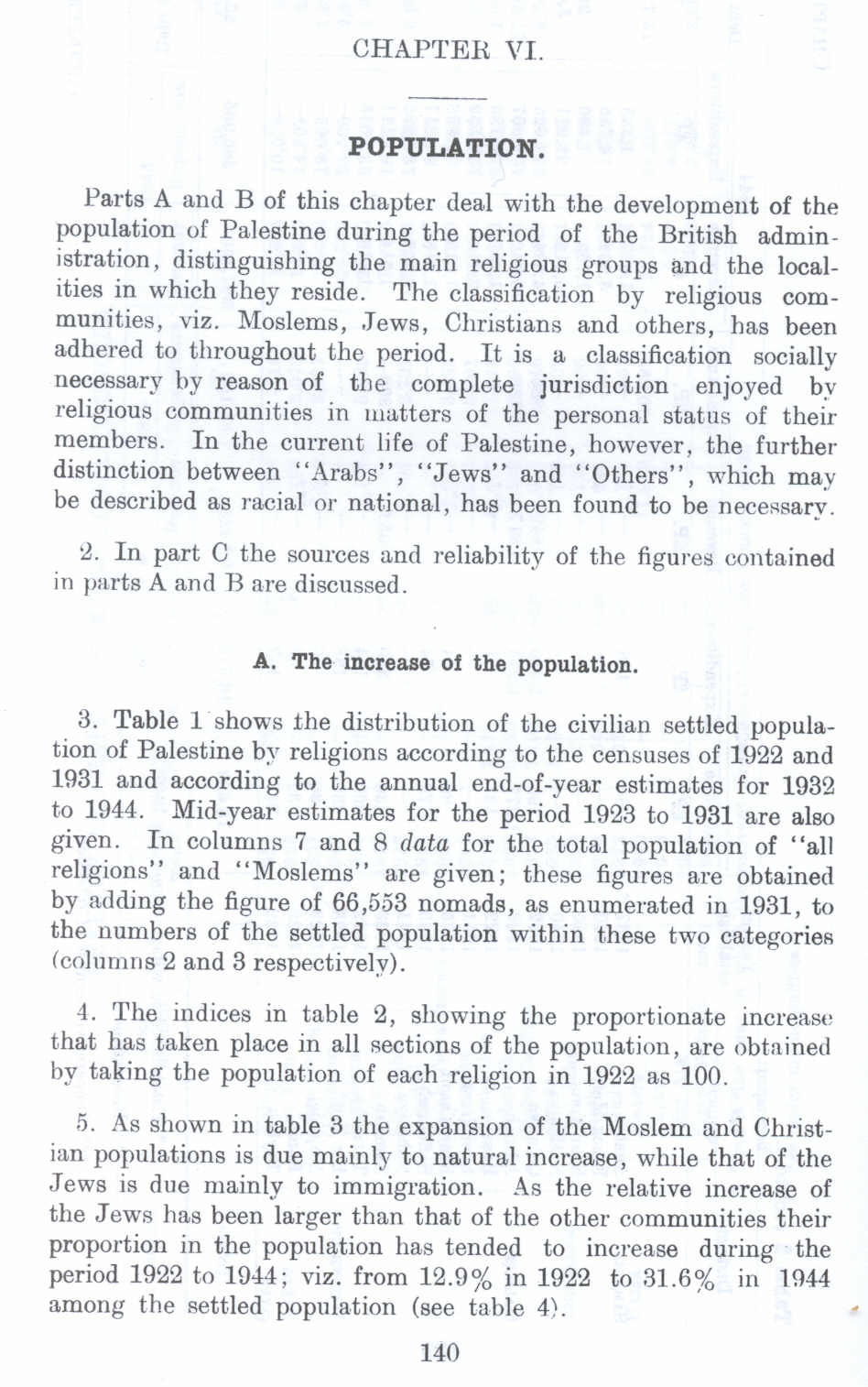| Prev | Next |
 |
| Prev | Next |
| PalestineRemembered | About Us | Oral History | العربية | |
| Pictures | Zionist FAQs | Haavara | Maps | |
| Search |
| Camps |
| Districts |
| Acre |
| Baysan |
| Beersheba |
| Bethlehem |
| Gaza |
| Haifa |
| Hebron |
| Jaffa |
| Jericho |
| Jerusalem |
| Jinin |
| Nablus |
| Nazareth |
| Ramallah |
| al-Ramla |
| Safad |
| Tiberias |
| Tulkarm |
| Donate |
| Contact |
| Profile |
| Videos |
Population in Palestine and the Increase in Population. British Mandate: A Survey of Palestine: Volume I - Page 140. Chapter VI |
Disclaimer
The above documents, article, interviews, movies, podcasts, or stories reflects solely the research and opinions of its authors. PalestineRemembered.com makes its best effort to validate its contents.


Post Your Comment
*It should be NOTED that your email address won't be shared, and all communications between members will be routed via the website's mail server.
POPULATION.
Parts A and B of this chapter deal with the development of the population of Palestine during the period of the British administration, distinguishing the main religions groups and the localities in which they reside. The classification by religious communities, viz. Moslems, Jews, Christians and others, has been adhered to throughout the period. It is a classification socially necessary by reason of the complete jurisdiction enjoyed by religious communities in mutters of the personal status of their members. In the current life of Palestine, however, the further distinction between "Arabs", "Jews" and "Others", which may be described as racial or national, has been found to be necessary.
~. In part C the sources and reliability of the figure contained in parts A and B are discussed.
A. The increase of the population.
3. Table 1 shows the distribution of the civilian settled population of Palestine by religions according to the censuses of 1922 and 1931 and according to the annual end-of-year estimates for 1932 to 1944. Mid-year estimates for the period 1923 to 1931 are also given. In columns 7 and 8 data for the total population of "all religions" and "Moslems" are given; these figures are obtained by adding the figure of 66,553 nomads, as enumerated in 1931, to the numbers of the settled population within these two categories (columns 2 and 3 respectively).
4. The indices in table 2, showing the proportionate increase that bas taken place in all sections of the population, are obtained by taking the population of each religion in 1922 as 100.
5. As shown in table 3 the expansion of the Moslem and Christian populations is due mainly to natural increase, while that of the Jews is due mainly to immigration. As the relative increase of the Jews has been larger than that of the other communities their proportion in the population has tended to increase during the period 1922 to 1944; viz. from 12.9% in 1922 to 31.6% in 1944 among the settled population (see table 4).
Page 140